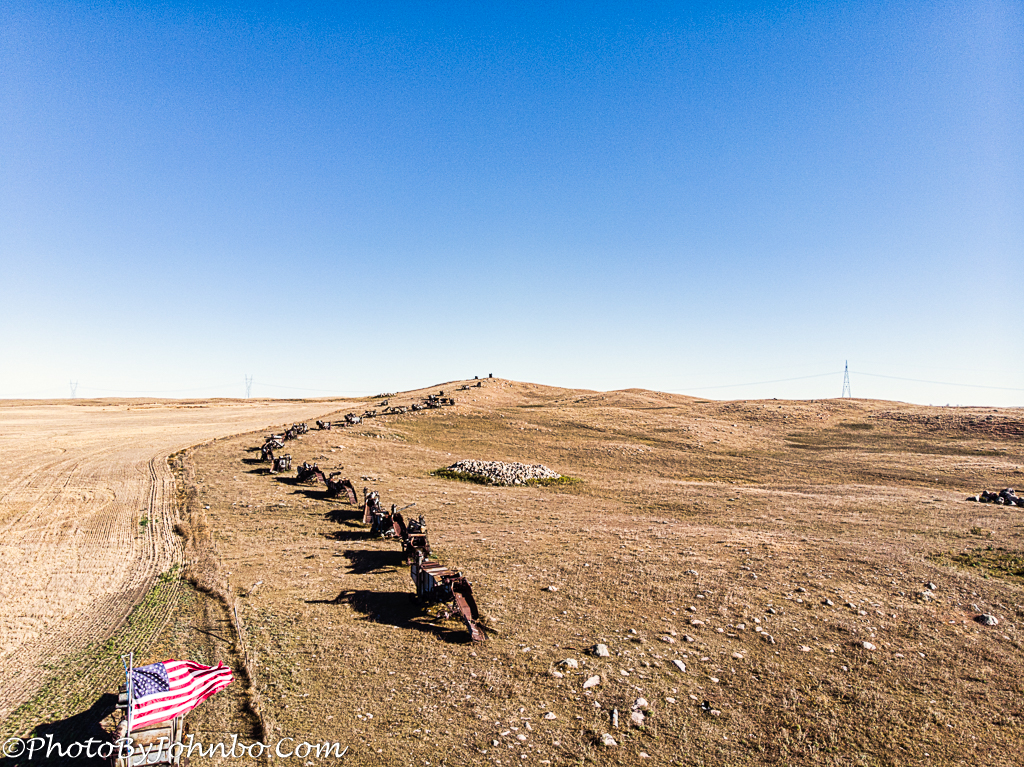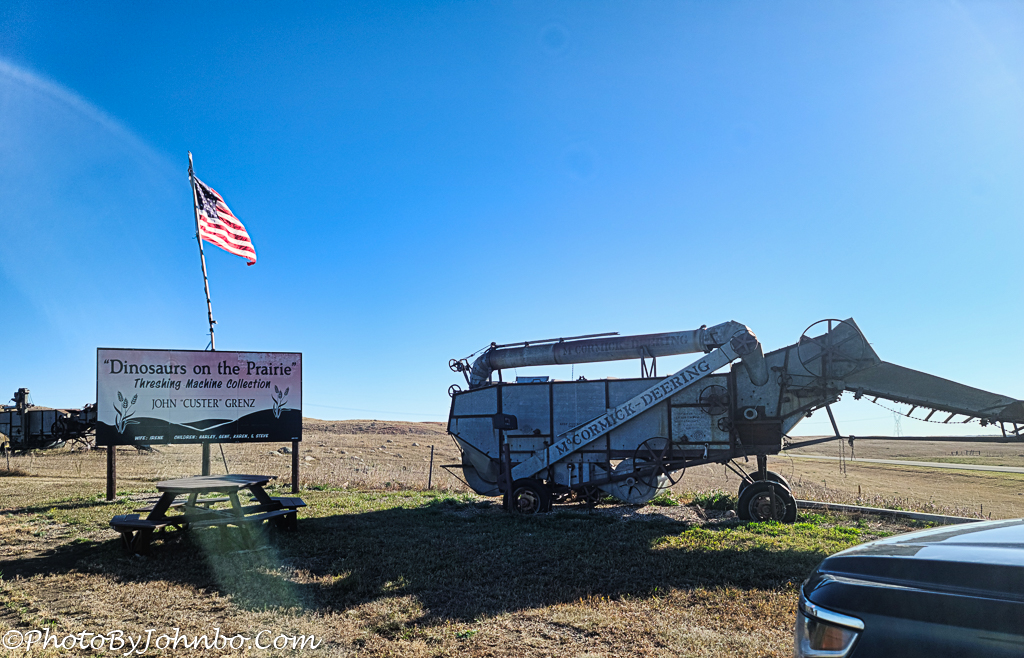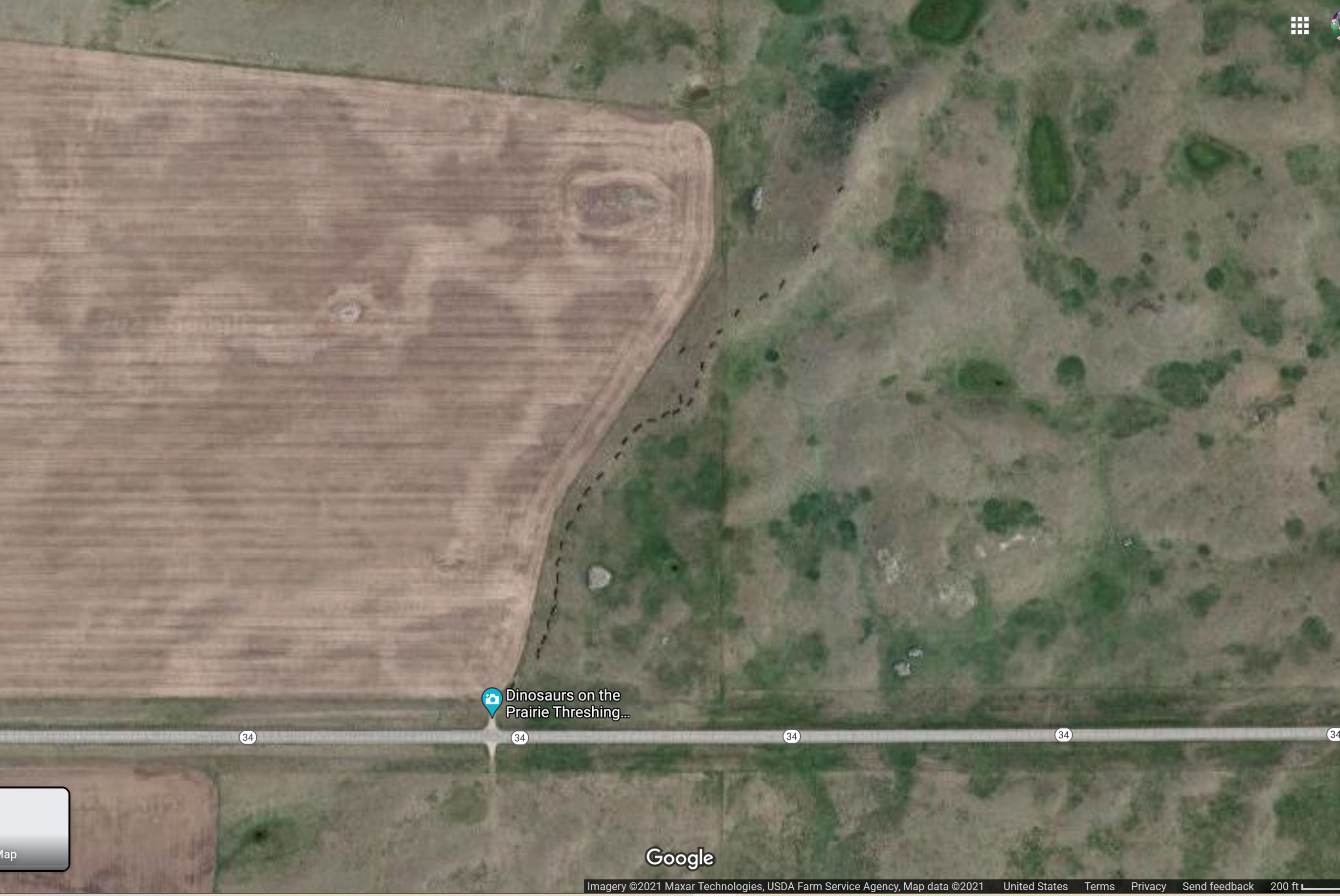Napoleon, North Dakota.
Around 1786, a Scottish inventor, Andrew Meikle, solved a problem that made harvesting wheat, corn, and other grains a process that required a large supply of manual labor. Before Meikle’s invention of the threshing machine, workers with flails beat the crop after picking to separate the chaff from the grain. The threshing machine could separate the outer husks from grains of wheat from the rest of the plant. The straw exited out the rear of the machine while the harvest fell through a grate below the rollers inside a drum that beat the crop against a curved casing.
Much more sophisticated equipment now replaces the threshing machine, but as late as the early 20th century, these giant machines were still in use in fields throughout the United States. A lot of mystic surrounds the process and annual threshing events are held to honor the labor-saving device. The image above was captured in 2016 at the Minnesota Steam Threshers Reunion, a Labor Day Weekend gathering that celebrates the machine. The specific machine above was actually powered by horses turning a large belt that operated the mechanics. You can see the belt behind the machine on the left. The green wagon blocks a view of the turnstile where draft animals provide the power to run the thresher.
About five miles east of Napoleon, North Dakota on North Dakota Highway 34, a sign announces a gathering of threshing machines. The sign proclaims these “Dinosaurs on the Prairie” were collected by John “Custer” Grenz, an area farmer. The collection winds its way up a small hill on what once was the homestead farm that Mr. Grenz and his wife operated until his retirement. He passed away in 2000, but his legacy lives on. The best way to show you that hillside display is in the opening photo, an image captured by my Mavic Air drone.
The machines are large enough to be seen in satellite images. I reproduced a screenshot from Google Maps of the collection that, from the high altitude, looks like so many ants climbing a hill in a single file line.
Another view from the drone shows also how little parking is available at the site. There is a field driveway that crosses the ditch next to the road, and if it’s not muddy, a car can park on the drive for the short while it takes to maybe walk to the top of the hill and view the collection. Remember, though, you are on private property so please respect the property for the owners who have left this collection for travelers to enjoy. 
On this autumn day, it was a bit windy and quite chilly, so we limited our visit to the few minutes it took to launch the drone, capture a few shots from above the hill, and move on. Today, that hill is known as “Custer’s Ridge” and we plan to return on a summer day to wander up the hill and get a closer look at these “dinosaurs” of earlier times.
John Steiner






Great post with fabulous historical facts and photos. Another place to put on my list. Thank you!
Thank you. I hope to stop by again this year when it’s a little warmer and we can spend more time walking the line up close.
How fascinating – just the sort of place we would stop if on a road trip in the area 😀
It is a worthy stop and not too far off the beaten path.
Thanks for sharing a picture of my past….I grew up with one of those dinosaurs being used on our farm every fall. Our machine navigated to several farms in the area helping neighbors harvest their grains.
I want to make it back again to the steam thresher reunion in Rollag this year.